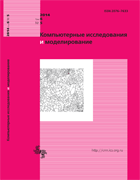All issues
- 2024 Vol. 16
- Issue 1 (special issue)
- 2023 Vol. 15
- 2022 Vol. 14
- 2021 Vol. 13
- 2020 Vol. 12
- 2019 Vol. 11
- 2018 Vol. 10
- 2017 Vol. 9
- 2016 Vol. 8
- 2015 Vol. 7
- 2014 Vol. 6
- 2013 Vol. 5
- 2012 Vol. 4
- 2011 Vol. 3
- 2010 Vol. 2
- 2009 Vol. 1
Simple behavioral model of imprint formation
Formation of adequate behavioral patterns in condition of the unknown environment carried out through exploratory behavior. At the same time the rapid formation of an acceptable pattern is more preferable than a long elaboration perfect pattern through repeat play learning situation. In extreme situations, phenomenon of imprinting is observed — instant imprinting of behavior pattern, which ensure the survival of individuals. In this paper we propose a hypothesis and imprint model when trained on a single successful pattern of virtual robot's neural network demonstrates the effective functioning. Realism of the model is estimated by checking the stability of playback behavior pattern to perturbations situation imprint run.
- , . Model of formation of primary behavioral patterns with adaptive behavior based on the combination of random search and experience. // Computer Research and Modeling. — 2016. — V. 8, no. 6. — P. 941. DOI: 10.20537/2076-7633-2016-8-6-941-950
Indexed in Scopus
Full-text version of the journal is also available on the web site of the scientific electronic library eLIBRARY.RU
The journal is included in the Russian Science Citation Index
The journal is included in the RSCI
International Interdisciplinary Conference "Mathematics. Computing. Education"







